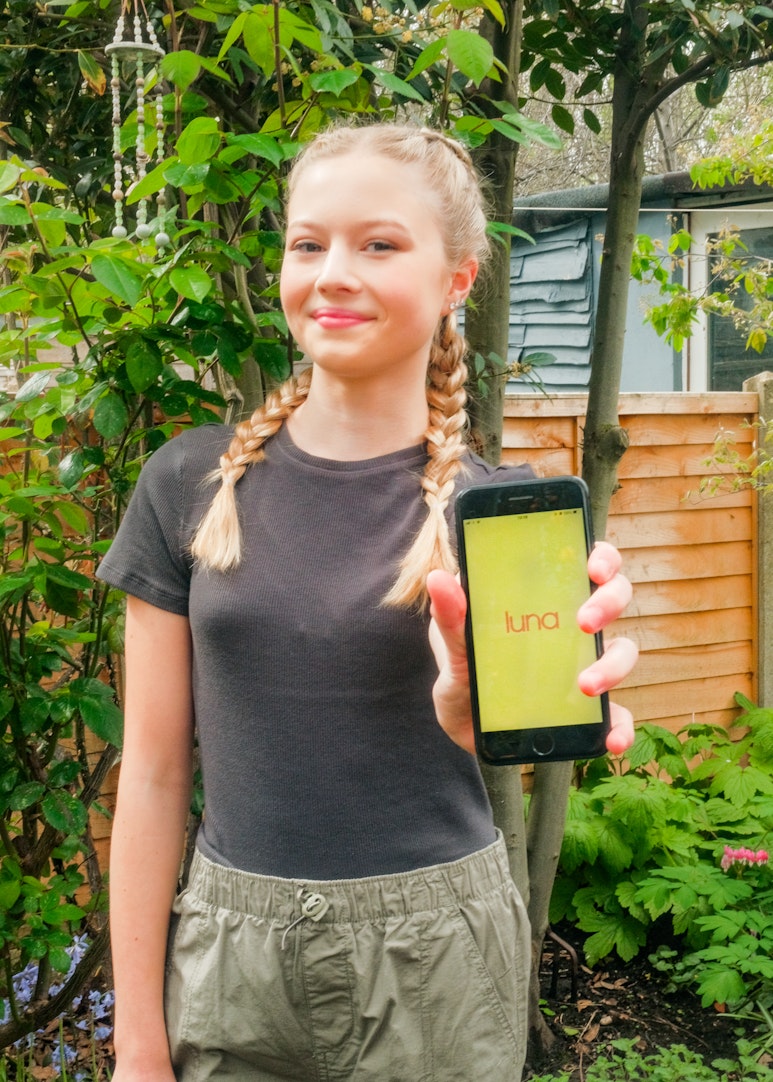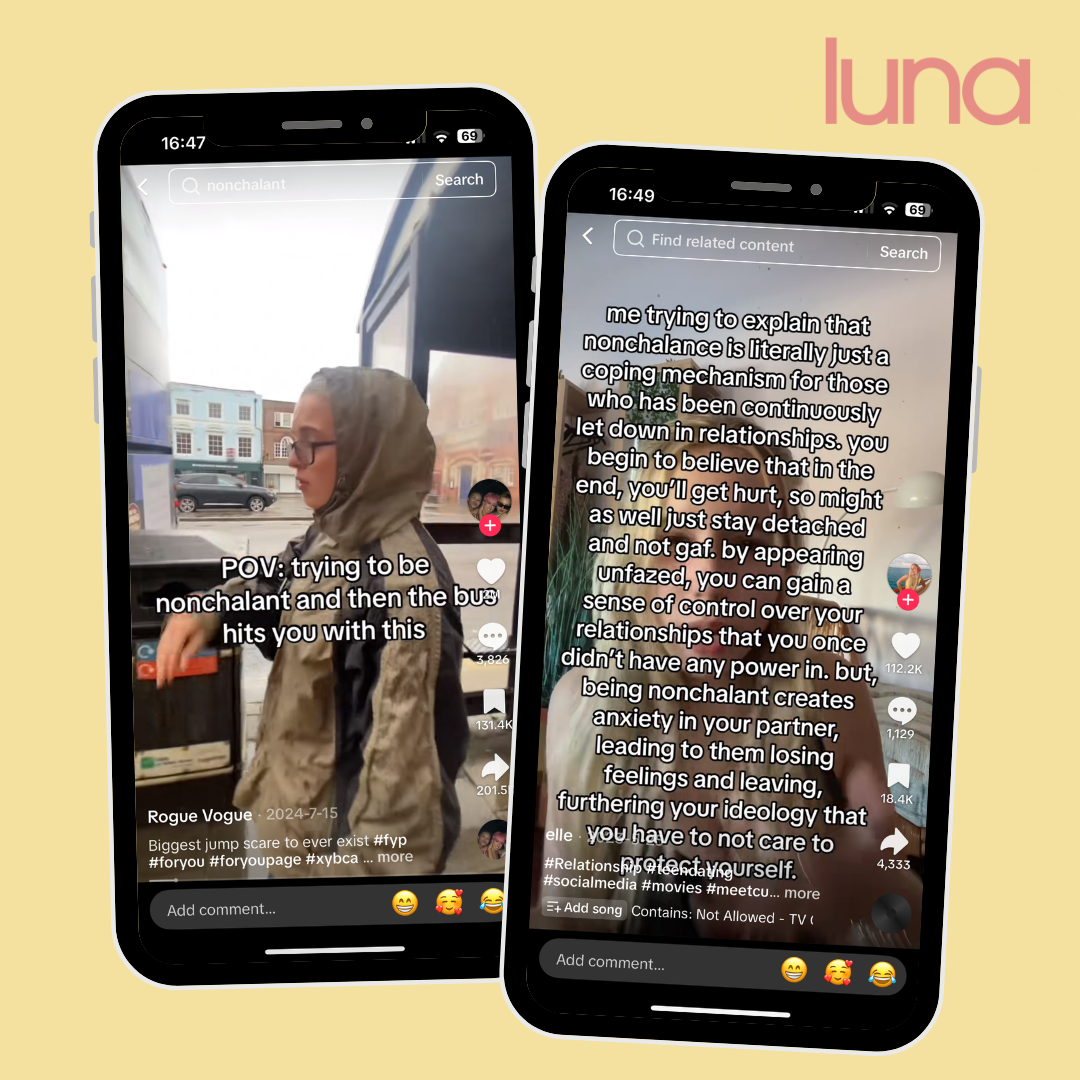
What is TikTok's “nonchalant” trend?
Why teens are acting like they don’t care

Quick summary
- TikTok's "nonchalant" trend encourages teens to appear indifferent and emotionally detached
- While it may seem like a harmless expression of coolness, this trend can mask deeper emotional struggles and hinder genuine connections
- Parents can support their teens by fostering open communication, validating emotions, and promoting healthy emotional expression

The nonchalant trend on TikTok sees people – including teens – trying to look effortlessly cool.
They avoid strong emotions.
They act like nothing matters.
Some people are even posting guides on how to be more nonchalant.
And now there’s a split: people are joking that “nonchalant” = cool, while “chalant” = uncool.
But others are admitting that being “chalant” (caring a lot) feels more true to who they are.
And at first glance, it might seem like a harmless thing – more about coming off as cool or caring, having a personal style or attitude.
But underneath, it may reflect something deeper, or more serious is going on – which is why we want to talk it.
One TikToker, @elle.kristine, put it plainly:
“Nonchalance is literally just a coping mechanism for those who have been continuously let down in relationships...You begin to believe that in the end, you'll get hurt, so might as well stay detached and not gaf.”
By appearing calm and detached, teens feel they’re protecting themselves from future hurt.
But the downside is that this disconnection can affect their friendships, their school life, and how they see themselves.
So let's talk about what this could mean for teens in more detail, and how you can support them as a parent.

What does being nonchalant mean?
Being “nonchalant” means acting like you don’t care, even when you might.
It’s about having calm indifference – no big reactions, no strong emotions, no obvious effort.
Some teens feel genuinely relaxed, that's true. But others are using this style to mask stress, pressure, or the fear of getting hurt.
It’s not always unhealthy, but it can become a habit that’s hard to break.
Nonchalant vs. chalant – are the labels harmful?
On TikTok, there’s a lot of different posts where people offer examples and funny videos explaining why they’re “so nonchalant” or why they “could never be chalant.”
This is all a bit of fun, of course. But it’s worth saying that, sometimes, these labels become limiting or can be taken too seriously by impressionable teens.
When teens start to see themselves only through these roles – the cool one, the emotional one, the chill one – it can make it harder to explore anything outside of that.
Teens are still figuring themselves out and so they need space to try on different ways of being without feeling stuck in one label.
So the labels aren’t in themselves harmful, so long as they’re not taken too seriously.
Why the nonchalance trend appeals to teens
There’s a growing pressure to appear unbothered and confident. In friendships, at school, and especially online.
Not caring has become a shortcut to looking cool.
It helps teens to avoid judgement as it’s easier to seem “unbothered” than risk being seen as “too emotional.”
And for teens who’ve been hurt before – in friendships, in family life or relationships – pulling back can feel safer.
One TikToker with the handle @annabellegesson offers a guide to being nonchalant using the hook “trust me you want to do this, because let’s be real being nonchalant is cool.”

What are some examples of nonchalance?
Again citing TikToker @annabellegesson’s guide to nonchalance, here are some examples:
- Never show your hand: when somebody annoys you, be unaffected – the moment that you show your reaction, you are giving up your power
- Act confident, even if you don’t feel it: stop seeking reassurance from the person you're talking to, it’s desperate and exhausting for the other person
- Always have options: in a committed relationship, it�’s important to have options so you're not too invested in that one person if they’re not
Signs your teen might be taking nonchalance too far
Some teens naturally have a relaxed thing going on or are more careful or closed in their interactions – and that’s completely okay!
But when nonchalance becomes a constant mask, or limits them from sharing when they’re struggling, it can become a problem.
Negative nonchalance may show up like this:
- Lack of interest in school or activities, also known as “quiet quitting”
- Saying “whatever” to everything
- Pulling away from family or close friends
- Not talking about their feelings
- Ignoring hygiene or basic care
- Avoiding serious conversations
But it’s worth saying that these aren’t signs of failure by any stretch – they just may be signs of stress, past struggles, disconnection, or uncertainty, which you as a parent can do your best to support them with.
How to support your teen through the nonchalance trend
Well, firstly, you’re only human and you can’t be expected to tackle this perfectly or all in one go – so give yourself grace.
But your interest matters more than you might think, and can really make a difference!
Try this:
- Be available: let your teen know you’re there for them, even when they’re quiet
- Ask, don’t lecture: questions like “what do you think about that?” can invite a real, honest conversation
- Respect their pace: don’t push too hard for answers
- Stay curious: even if they seem unsure, make it clear that their opinions matter
- Notice the little things: when they do make an effort, celebrate that to give them a confidence boost to try next time
- Model healthy relationships: set a positive example by talking about how you feel with your friends/partner/family members
- Set them up with luna: luna is an app that's full of tools and advice to help teens form a healthy relationship with their emotions, family and friends

Mainly, teens learn how to relate by watching us. Model healthy emotional expression – whether that’s talking through a disagreement, owning your feelings, or just being present.
It shows them that caring about something doesn’t have to come with loads of drama.
All of these little things will hopefully encourage your teen to care, and want to show that they care.
When teens feel safe to show what they’re really thinking, they don’t need to hide behind “I don’t care.”
Final thoughts on the nonchalance trend
Ultimately, when it comes to tackling this trend it’s not about calling it out, it’s more about being there for them.
The nonchalance trend doesn’t mean your teen is in trouble or doing something terrible, but it might be a sign they’re trying to manage a lot on their own.
So don’t try to dig for answers, instead keep the door open and celebrate it when you do see something positive.
How we created this article:
luna's team of experts comprises GPs, Dermatologists, Safeguarding Leads and Junior Doctors as well as Medical Students with specialised interests in paediatric care, mental health and gynaecology. All articles are created by experts, and reviewed by a member of luna's senior review team.
We'd love to keep in touch!
Sign up to our parent newsletter for emails on the latest teen trends, insights into our luna community and to keep up to date
By signing up, you are agreeing that we can use your email address to market to you. You can unsubscribe from marketing emails at any time by using the link in our emails. For more information, please review our privacy statement.